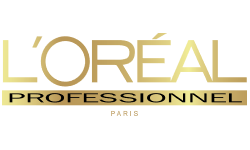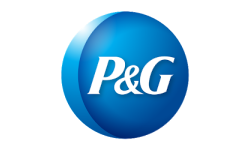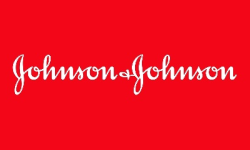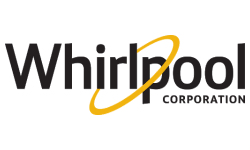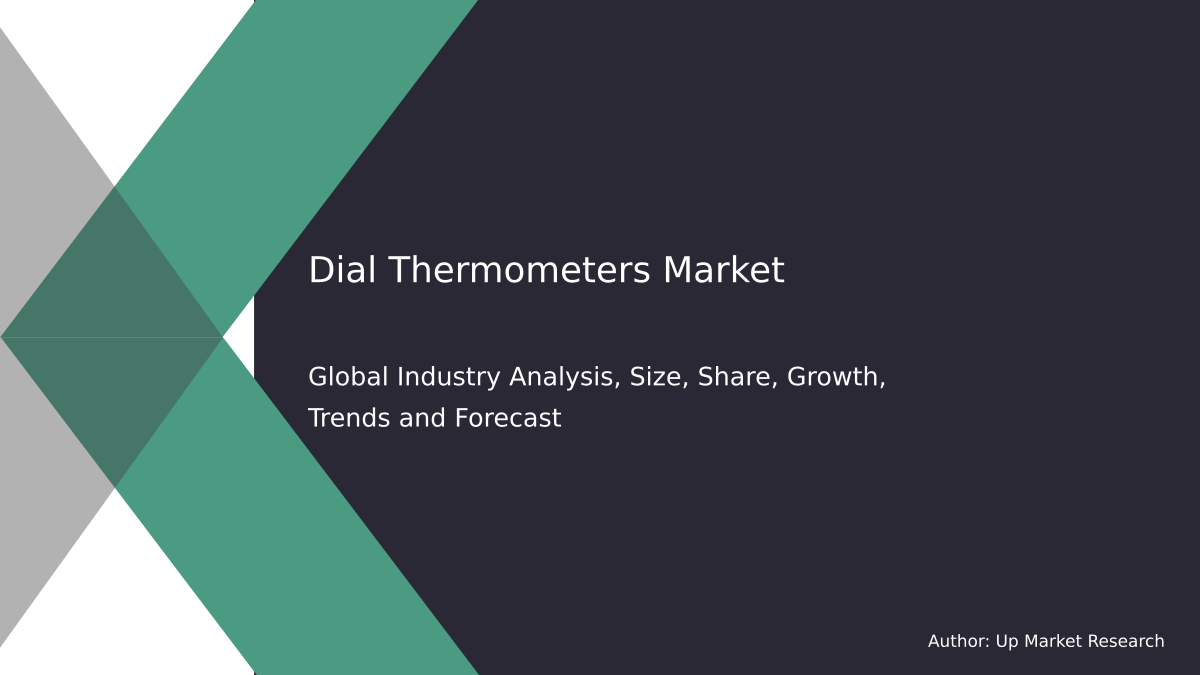
Global Decontamination Equipment Market by Type (Physical Based Methods, Chemicals Based Methods, Biology Based Methods), By Application (Commercial, Domestic) and Region (North America, Latin America, Europe, Asia Pacific and Middle East & Africa), Forecast To 2028
The Global Decontamination Equipment Market size was valued at USD 5.2 billion in 2016 and is projected to reach USD 7.7 billion by 2028, growing at a CAGR of 4.1% from 2021 to 2028. Factors such as the increasing need for protection against bioterrorism threats, rising awareness about the importance of hygiene and safety among consumers, and growth in demand for disposable products are expected to drive the global decontamination equipment market during the forecast period.
Decontamination equipment is the instruments or machines used for decontaminating objects, areas, and personnel. This includes anything from a simple scrub brush to automated industrial systems which can cost many millions of dollars. The goal is to reduce contamination that could be hazardous to humans either by being infectious (such as viruses) or toxic (such as chemicals).
Decontamination equipment can be used to sanitize many surfaces, from medical instruments and hospital beds to public transit vehicles. There are also a number of commercial devices which allow for the decontamination or sterilization of people such as air showers and full-body wash systems. The use cases vary depending on what kind of device is being discussed--some may only have one application while others might be more versatile like chemists' gloves. All types are important though because they protect humans against all sorts of risks including bioterrorism threats, the increased prevalence in awareness about hygiene among consumers, growth in demand for disposable products.
On the basis of Type, the market is segmented into Physical Based Methods, Chemicals Based Methods, and Biology-Based Methods.
Physical Based Methods:
Physical-based methods include devices such as ultraviolet radiation, heat, and steam. Devices like these can be used to kill microorganisms on surfaces by destroying their DNA or killing them with high temperatures. The most common physical-based method is the use of UV light which kills viruses and bacteria using a specific wavelength that destroys cells' nucleic acid through oxidation reactions. This process has been shown to eliminate 99% of all germs in 30 seconds without any chemicals or harmful side effects for humans who come into contact with it.
Chemicals Based Methods:
Chemicals-based methods include chemicals such as alcohol, bleach, and hydrogen peroxide. These substances are usually used in combination with steam or heat-based process to kill microorganisms on surfaces. Similar to physical-based methods, the use of these chemical decontaminants is thought to be effective because they can penetrate cracks and crevices where many germs thrive. Chemicals like ethanol have been shown to completely eliminate 99% of all germs within 30 seconds without any harmful side effects for humans who come into contact with it.
Biology-Based Methods:
Biology-based methods include the use of biological agents such as bacteria to kill microorganisms. These substances are usually applied onto surfaces and then exposed to a chemical agent, heat, or ultraviolet light in order to activate them. The most commonly used organism for this type of decontamination is called Bacillus subtilis that binds itself on the surface and releases an enzyme that breaks down proteins into peptides. Unlike physical-based methods, these solutions can be reused since they don’t require any additional equipment like steamers or heating systems. This helps save costs incurred from disposing of chemicals after each application while also reducing carbon emissions generated by power plants needed for energy input during those processes.
On the basis of Application, the market is segmented into Commercial and Domestic. The commercial segment is further divided into Industrial, Foodservice, Healthcare & Medical Institutions (Healthcare), and Other Commercials. The industrial application deals with the decontamination of spaces like production lines or warehouses so that they can be safely used for their intended purpose without spreading harmful bacteria to other areas in the facility. The domestic segment also includes residential properties such as dormitories, apartment complexes, and single-family homes which are susceptible to the rapid growth of microorganisms if not properly cleaned on a regular basis.
On the basis of Region, the market is segmented into North America, Latin America (L.A.), Europe, Asia Pacific, and Middle East & Africa. The European region is anticipated to be the leading regional segment of the global decontamination equipment market due to the increasing number of industrial and residential developments in this region. The Asia Pacific is expected to register a CAGR higher than other regions during the forecast period.
North America and Latin America are expected to have similar growth rates over 20 years from 2021-2028. Within these two markets, Canada has been experiencing steady economic growth which should lead to increased spending on building projects that require decontamination equipment such as chemicals products for flameproofing or ventilating raw materials before they can enter buildings.
Up Market Research published a new report titled “Decontamination Equipment Market research report which is segmented by Types (Physical Based Methods, Chemicals Based Methods, Biology Based Methods), By Applications (Commercial, Domestic), By Players/Companies STERIS, Getinge, Noxilizer, Cosmed, Sterigenics, Stericert, Synergy Health, Belimed, Matachana, H&W Technology”.
Report Scope
| Report Attributes | Report Details |
| Report Title | Decontamination Equipment Market Research Report |
| By Type | Physical Based Methods, Chemicals Based Methods, Biology Based Methods |
| By Application | Commercial, Domestic |
| By Companies | STERIS, Getinge, Noxilizer, Cosmed, Sterigenics, Stericert, Synergy Health, Belimed, Matachana, H&W Technology |
| Regions Covered | North America, Europe, APAC, Latin America, MEA |
| Base Year | 2020 |
| Historical Year | 2018 to 2019 (Data from 2010 can be provided as per availability) |
| Forecast Year | 2028 |
| Number of Pages | 200 |
| Number of Tables & Figures | 140 |
| Customization Available | Yes, the report can be customized as per your need. |
The report covers comprehensive data on emerging trends, market drivers, growth opportunities, and restraints that can change the market dynamics of the industry. It provides an in-depth analysis of the market segments which include products, applications, and competitor analysis.

Global Decontamination Equipment Market Report Segments:
The market is segmented by Type Physical Based Methods, Chemicals Based Methods, Biology Based Methods and By Application Commercial, Domestic.
Some of the companies that are profiled in this report are:
- STERIS
- Getinge
- Noxilizer
- Cosmed
- Sterigenics
- Stericert
- Synergy Health
- Belimed
- Matachana
- H&W Technology
Decontamination Equipment Market research report delivers a close watch on leading competitors with strategic analysis, micro and macro market trend and scenarios, pricing analysis and a holistic overview of the market situations in the forecast period. It is a professional and a detailed report focusing on primary and secondary drivers, market share, leading segments and geographical analysis. Further, key players, major collaborations, merger & acquisitions along with trending innovation and business policies are reviewed in the report.
Key Benefits for Industry Participants & Stakeholders:
- Industry drivers, restraints, and opportunities covered in the study
- Neutral perspective on the market performance
- Recent industry trends and developments
- Competitive landscape & strategies of key players
- Potential & niche segments and regions exhibiting promising growth covered
- Historical, current, and projected market size, in terms of value
- In-depth analysis of the Decontamination Equipment Market
Overview of the regional outlook of the Decontamination Equipment Market:
Based on region, the market is segmented into North America, Europe, Asia Pacific, Latin America and Middle East & Africa (MEA). North America region is further bifurcated into countries such as U.S., and Canada. The Europe region is further categorized into U.K., France, Germany, Italy, Spain, Russia, and Rest of Europe. Asia Pacific is further segmented into China, Japan, South Korea, India, Australia, South East Asia, and Rest of Asia Pacific. Latin America region is further segmented into Brazil, Mexico, and Rest of Latin America, and the MEA region is further divided into GCC, Turkey, South Africa, and Rest of MEA.

Highlights of The Decontamination Equipment Market Report:
- The market structure and projections for the coming years.
- Drivers, restraints, opportunities, and current trends of Decontamination Equipment Market.
- Historical data and forecast.
- Estimations for the forecast period 2028.
- Developments and trends in the market.
- By Type:
1. Physical Based Methods
2. Chemicals Based Methods
3. Biology Based Methods
7. By Application:1. Commercial
2. Domestic
- Market scenario by region, sub-region, and country.
- Market share of the market players, company profiles, product specifications, SWOT analysis, and competitive landscape.
- Analysis regarding upstream raw materials, downstream demand, and current market dynamics.
- Government Policies, Macro & Micro economic factors are also included in the report.
We have studied the Decontamination Equipment Market in 360 degrees via. both primary & secondary research methodologies. This helped us in building an understanding of the current market dynamics, supply-demand gap, pricing trends, product preferences, consumer patterns & so on. The findings were further validated through primary research with industry experts & opinion leaders across countries. The data is further compiled & validated through various market estimation & data validation methodologies. Further, we also have our in-house data forecasting model to predict market growth up to 2028.
How you may use our products:
- Correctly Positioning New Products
- Market Entry Strategies
- Business Expansion Strategies
- Consumer Insights
- Understanding Competition Scenario
- Product & Brand Management
- Channel & Customer Management
- Identifying Appropriate Advertising Appeals

Reasons to Purchase the Decontamination Equipment Market Report:
- The report includes a plethora of information such as market dynamics scenario and opportunities during the forecast period
- Segments and sub-segments include quantitative, qualitative, value (USD Million,) and volume (Units Million) data.
- Regional, sub-regional, and country level data includes the demand and supply forces along with their influence on the market.
- The competitive landscape comprises share of key players, new developments, and strategies in the last three years.
- Comprehensive companies offering products, relevant financial information, recent developments, SWOT analysis, and strategies by these players.
Chapter 2 Assumptions and Acronyms Used
Chapter 3 Research Methodology
Chapter 4 Decontamination Equipment Market Overview
4.1 Introduction
4.1.1 Market Taxonomy
4.1.2 Market Definition
4.1.3 Macro-Economic Factors Impacting the Market Growth
4.2 Decontamination Equipment Market Dynamics
4.2.1 Market Drivers
4.2.2 Market Restraints
4.2.3 Market Opportunity
4.3 Decontamination Equipment Market - Supply Chain Analysis
4.3.1 List of Key Suppliers
4.3.2 List of Key Distributors
4.3.3 List of Key Consumers
4.4 Key Forces Shaping the Decontamination Equipment Market
4.4.1 Bargaining Power of Suppliers
4.4.2 Bargaining Power of Buyers
4.4.3 Threat of Substitution
4.4.4 Threat of New Entrants
4.4.5 Competitive Rivalry
4.5 Global Decontamination Equipment Market Size & Forecast, 2018-2028
4.5.1 Decontamination Equipment Market Size and Y-o-Y Growth
4.5.2 Decontamination Equipment Market Absolute $ Opportunity
Chapter 5 Global Decontamination Equipment Market Analysis and Forecast by Type
5.1 Introduction
5.1.1 Key Market Trends & Growth Opportunities by Type
5.1.2 Basis Point Share (BPS) Analysis by Type
5.1.3 Absolute $ Opportunity Assessment by Type
5.2 Decontamination Equipment Market Size Forecast by Type
5.2.1 Physical Based Methods
5.2.2 Chemicals Based Methods
5.2.3 Biology Based Methods
5.3 Market Attractiveness Analysis by Type
Chapter 6 Global Decontamination Equipment Market Analysis and Forecast by Applications
6.1 Introduction
6.1.1 Key Market Trends & Growth Opportunities by Applications
6.1.2 Basis Point Share (BPS) Analysis by Applications
6.1.3 Absolute $ Opportunity Assessment by Applications
6.2 Decontamination Equipment Market Size Forecast by Applications
6.2.1 Commercial
6.2.2 Domestic
6.3 Market Attractiveness Analysis by Applications
Chapter 7 Global Decontamination Equipment Market Analysis and Forecast by Region
7.1 Introduction
7.1.1 Key Market Trends & Growth Opportunities by Region
7.1.2 Basis Point Share (BPS) Analysis by Region
7.1.3 Absolute $ Opportunity Assessment by Region
7.2 Decontamination Equipment Market Size Forecast by Region
7.2.1 North America
7.2.2 Europe
7.2.3 Asia Pacific
7.2.4 Latin America
7.2.5 Middle East & Africa (MEA)
7.3 Market Attractiveness Analysis by Region
Chapter 8 Coronavirus Disease (COVID-19) Impact
8.1 Introduction
8.2 Current & Future Impact Analysis
8.3 Economic Impact Analysis
8.4 Government Policies
8.5 Investment Scenario
Chapter 9 North America Decontamination Equipment Analysis and Forecast
9.1 Introduction
9.2 North America Decontamination Equipment Market Size Forecast by Country
9.2.1 U.S.
9.2.2 Canada
9.3 Basis Point Share (BPS) Analysis by Country
9.4 Absolute $ Opportunity Assessment by Country
9.5 Market Attractiveness Analysis by Country
9.6 North America Decontamination Equipment Market Size Forecast by Type
9.6.1 Physical Based Methods
9.6.2 Chemicals Based Methods
9.6.3 Biology Based Methods
9.7 Basis Point Share (BPS) Analysis by Type
9.8 Absolute $ Opportunity Assessment by Type
9.9 Market Attractiveness Analysis by Type
9.10 North America Decontamination Equipment Market Size Forecast by Applications
9.10.1 Commercial
9.10.2 Domestic
9.11 Basis Point Share (BPS) Analysis by Applications
9.12 Absolute $ Opportunity Assessment by Applications
9.13 Market Attractiveness Analysis by Applications
Chapter 10 Europe Decontamination Equipment Analysis and Forecast
10.1 Introduction
10.2 Europe Decontamination Equipment Market Size Forecast by Country
10.2.1 Germany
10.2.2 France
10.2.3 Italy
10.2.4 U.K.
10.2.5 Spain
10.2.6 Russia
10.2.7 Rest of Europe
10.3 Basis Point Share (BPS) Analysis by Country
10.4 Absolute $ Opportunity Assessment by Country
10.5 Market Attractiveness Analysis by Country
10.6 Europe Decontamination Equipment Market Size Forecast by Type
10.6.1 Physical Based Methods
10.6.2 Chemicals Based Methods
10.6.3 Biology Based Methods
10.7 Basis Point Share (BPS) Analysis by Type
10.8 Absolute $ Opportunity Assessment by Type
10.9 Market Attractiveness Analysis by Type
10.10 Europe Decontamination Equipment Market Size Forecast by Applications
10.10.1 Commercial
10.10.2 Domestic
10.11 Basis Point Share (BPS) Analysis by Applications
10.12 Absolute $ Opportunity Assessment by Applications
10.13 Market Attractiveness Analysis by Applications
Chapter 11 Asia Pacific Decontamination Equipment Analysis and Forecast
11.1 Introduction
11.2 Asia Pacific Decontamination Equipment Market Size Forecast by Country
11.2.1 China
11.2.2 Japan
11.2.3 South Korea
11.2.4 India
11.2.5 Australia
11.2.6 South East Asia (SEA)
11.2.7 Rest of Asia Pacific (APAC)
11.3 Basis Point Share (BPS) Analysis by Country
11.4 Absolute $ Opportunity Assessment by Country
11.5 Market Attractiveness Analysis by Country
11.6 Asia Pacific Decontamination Equipment Market Size Forecast by Type
11.6.1 Physical Based Methods
11.6.2 Chemicals Based Methods
11.6.3 Biology Based Methods
11.7 Basis Point Share (BPS) Analysis by Type
11.8 Absolute $ Opportunity Assessment by Type
11.9 Market Attractiveness Analysis by Type
11.10 Asia Pacific Decontamination Equipment Market Size Forecast by Applications
11.10.1 Commercial
11.10.2 Domestic
11.11 Basis Point Share (BPS) Analysis by Applications
11.12 Absolute $ Opportunity Assessment by Applications
11.13 Market Attractiveness Analysis by Applications
Chapter 12 Latin America Decontamination Equipment Analysis and Forecast
12.1 Introduction
12.2 Latin America Decontamination Equipment Market Size Forecast by Country
12.2.1 Brazil
12.2.2 Mexico
12.2.3 Rest of Latin America (LATAM)
12.3 Basis Point Share (BPS) Analysis by Country
12.4 Absolute $ Opportunity Assessment by Country
12.5 Market Attractiveness Analysis by Country
12.6 Latin America Decontamination Equipment Market Size Forecast by Type
12.6.1 Physical Based Methods
12.6.2 Chemicals Based Methods
12.6.3 Biology Based Methods
12.7 Basis Point Share (BPS) Analysis by Type
12.8 Absolute $ Opportunity Assessment by Type
12.9 Market Attractiveness Analysis by Type
12.10 Latin America Decontamination Equipment Market Size Forecast by Applications
12.10.1 Commercial
12.10.2 Domestic
12.11 Basis Point Share (BPS) Analysis by Applications
12.12 Absolute $ Opportunity Assessment by Applications
12.13 Market Attractiveness Analysis by Applications
Chapter 13 Middle East & Africa (MEA) Decontamination Equipment Analysis and Forecast
13.1 Introduction
13.2 Middle East & Africa (MEA) Decontamination Equipment Market Size Forecast by Country
13.2.1 Saudi Arabia
13.2.2 South Africa
13.2.3 UAE
13.2.4 Rest of Middle East & Africa (MEA)
13.3 Basis Point Share (BPS) Analysis by Country
13.4 Absolute $ Opportunity Assessment by Country
13.5 Market Attractiveness Analysis by Country
13.6 Middle East & Africa (MEA) Decontamination Equipment Market Size Forecast by Type
13.6.1 Physical Based Methods
13.6.2 Chemicals Based Methods
13.6.3 Biology Based Methods
13.7 Basis Point Share (BPS) Analysis by Type
13.8 Absolute $ Opportunity Assessment by Type
13.9 Market Attractiveness Analysis by Type
13.10 Middle East & Africa (MEA) Decontamination Equipment Market Size Forecast by Applications
13.10.1 Commercial
13.10.2 Domestic
13.11 Basis Point Share (BPS) Analysis by Applications
13.12 Absolute $ Opportunity Assessment by Applications
13.13 Market Attractiveness Analysis by Applications
Chapter 14 Competition Landscape
14.1 Decontamination Equipment Market: Competitive Dashboard
14.2 Global Decontamination Equipment Market: Market Share Analysis, 2019
14.3 Company Profiles (Details – Overview, Financials, Developments, Strategy)
14.3.1 STERIS
14.3.2 Getinge
14.3.3 Noxilizer
14.3.4 Cosmed
14.3.5 Sterigenics
14.3.6 Stericert
14.3.7 Synergy Health
14.3.8 Belimed
14.3.9 Matachana
14.3.10 H&W Technology
The global Decontamination Equipment market has been segmented based on
By Types
- Physical Based Methods
- Chemicals Based Methods
- Biology Based Methods
- Commercial
- Domestic
- Asia Pacific
- North America
- Latin America
- Europe
- Middle East & Africa
- STERIS
- Getinge
- Noxilizer
- Cosmed
- Sterigenics
- Stericert
- Synergy Health
- Belimed
- Matachana
- H&W Technology
Related Reports
Some other reports from this category!





